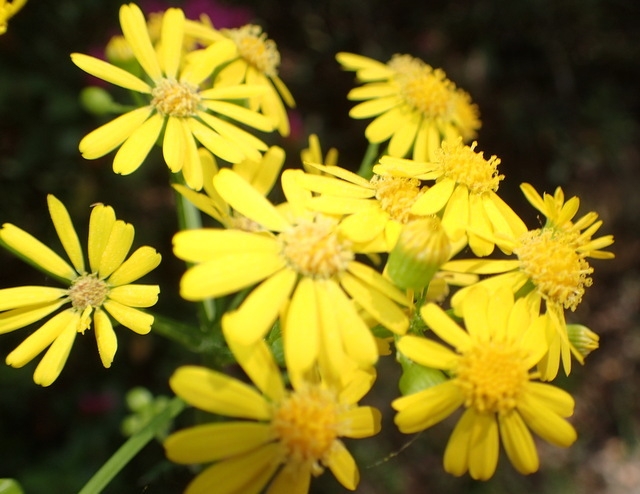Butterweed
(Packera glabella)
Butterweed (Packera glabella)
/
/

mfeaver
CC BY 4.0
Image By:
mfeaver
Recorded By:
Copyright:
CC BY 4.0
Copyright Notice:
Photo by: mfeaver | License Type: CC BY 4.0 | License URL: http://creativecommons.org/licenses/by/4.0/ | Rights Holder: mfeaver | Publisher: iNaturalist | Date Created: 2021-03-13T14:26:24-08:00 |


















































Estimated Native Range
Summary
Packera glabella, commonly known as Butterweed, Cressleaf Groundsel, or Yellowtop, is an annual herb native to floodplain forests, moist meadows, and low-lying areas in the central and southeastern United States. This plant typically grows to a height of 1-3 feet (0.3-0.9 meters) and is characterized by its bright yellow, daisy-like flowers that bloom in the spring and are quite showy, attracting various pollinators. The foliage is generally green and can have a slightly glossy appearance.
Butterweed is known for its rapid growth and ability to colonize disturbed areas, making it useful for soil stabilization and restoration projects. It is often found in wetland restoration sites and can be used in rain gardens due to its high water requirements. However, it is toxic to humans if ingested, and care should be taken when planting it in areas accessible to children or pets. In cultivation, it prefers full sun to part shade and can tolerate a range of soil moisture conditions, from wet to moderately dry, provided the soil has good drainage. While it is not commonly used in ornamental horticulture, its vibrant yellow flowers can add a splash of color to naturalized areas or wildflower gardens.CC BY-SA 4.0
Butterweed is known for its rapid growth and ability to colonize disturbed areas, making it useful for soil stabilization and restoration projects. It is often found in wetland restoration sites and can be used in rain gardens due to its high water requirements. However, it is toxic to humans if ingested, and care should be taken when planting it in areas accessible to children or pets. In cultivation, it prefers full sun to part shade and can tolerate a range of soil moisture conditions, from wet to moderately dry, provided the soil has good drainage. While it is not commonly used in ornamental horticulture, its vibrant yellow flowers can add a splash of color to naturalized areas or wildflower gardens.CC BY-SA 4.0
Plant Description
- Plant Type: Herb
- Height: 2-3 feet
- Width: 0.2-0.5 feet
- Growth Rate: Rapid
- Flower Color: Yellow
- Flowering Season: Spring
- Leaf Retention:
Growth Requirements
- Sun: Full Sun, Part Shade
- Water: Medium
- Drainage: Medium
Common Uses
Bee Garden, Bird Garden, Butterfly Garden, Low Maintenance, Showy Flowers, Street Planting
Natural Habitat
Native to floodplain forests, moist meadows, and low-lying areas
Other Names
Common Names: Cress-Leaved Groundsel , Cress-Leaf Groundsel , Yellowtop , Séneçon Glabre
Scientific Names: Packera glabella , Senecio glabellus , Senecio lobatus , Senecio densiflorus , Senecio mississipianus , Senecio carolinianus , Senecio glabellus f. glabellus , Senecio lyratus
GBIF Accepted Name: Packera glabella (Poir.) C.Jeffrey